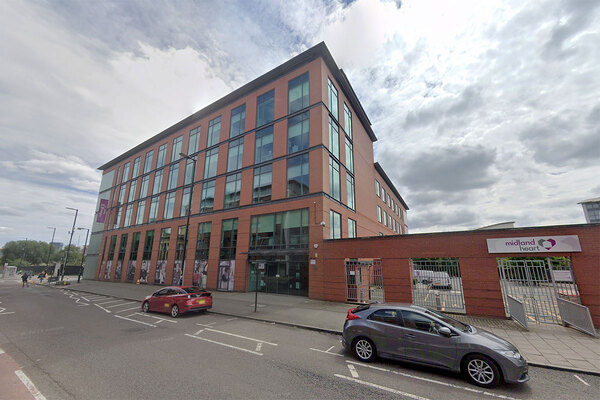You are viewing 1 of your 1 free articles
We need to properly understand the public view of the green belt
Public perception of development has become distorted, writes Ian Barnett, national land director at Leaders Romans Group
There’s a very important first step that needs to be taken to meet the demand for social and affordable housing: we need a greater understanding of public sentiment around the green belt and a moderate adult conversation to replace the politicking and propaganda.
Of the many issues impacting on the building of new homes, the green belt is perhaps the most contentious. Yet if asked whether they would choose a resolution to the housing crisis or an expansion of the green belt, the majority of people would probably choose the former.
Furthermore, addressing the housing shortfall does not require for the green belt to be reduced – just simply reviewed. It is a lesser known fact that the green belt was actually increased last year despite 235,000 new homes being permitted.
A review would make much better use of less attractive areas of the green belt. Keir Starmer has recently referred to this as the ‘grey belt’. However, in reality, there is no ‘belt’ of disused petrol stations and quarries – it’s a much more complex picture whereby large areas of green belt are speckled with grey dots.
But the principle is a sensible one: identifying areas ripe for development. At the same time, there is a strong case for identifying and protecting valuable greenfield land, including national parks, agricultural land and woodlands, which are rightly appreciated. In fact, a review of the green belt need not mean a reduction of the green belt, simply a change in its boundaries.
This straightforward approach would appeal across the political and demographic spectrums. Statistics show how public perception has become distorted. For example, the public believes that 47.1% of England is developed; it’s actually just 8.7%.
In contrast, 12.6% of England is protected by green belt, which is increasing year on year. The green belt around London is three times the size of the city itself. There is also substantial green belt land around 16 of England’s towns and cities, including London, Manchester, Birmingham and Liverpool.
“The ‘threat’ to the green belt has long been a rallying call for campaigners against new development, with a suggestion that the country’s green belt is under threat as never before. But, again, the statistics paint a very different picture”
Furthermore, contrary to public belief, not all green belt land is free to be enjoyed by the public: roughly one-quarter is accessible (only 9.3% of which is allocated as National Park) and the vast majority is privately owned farmland.
The ‘threat’ to the green belt has long been a rallying call for campaigners against new development, with a suggestion that the country’s green belt is under threat as never before. But, again, the statistics paint a very different picture. In 2023, the area of green belt land in England, at 1,638,420 hectares, was its highest in 20 years.
I believe that if people understood the impact of ‘protection’, they may see it differently. Far from the vision of a bucolic ring of verdant countryside open to all, much of the green belt is unappreciated and underutilised, often previously developed brownfield land. Even CPRE, the countryside charity, has put on record that of the 60,714 ha Nottingham and Derby green belt, 36% is “neglected”.
It’s important to consider how the benefits of the green belt can be delivered closer to people’s homes, specifically the inclusion of high-quality natural landscapes within and around residential developments which address both sustainability and social objectives. Many new developments now do so very effectively – infinitely more so than the housing developments of the ’80s and ’90s. And the new requirement that new developments achieve a 10% biodiversity uplift is a step in the right direction.
Even Tony Juniper, chair of Natural England, has stated that building on the green belt should be part of the UK’s answer to the housing crisis, provided more effort is also put into improving the quality of urban green space. In an article in The Guardian in November, he explained that new housing and better protection for green spaces, wildlife and nature should not be seen as opposites.
Mr Juniper explained that the “oppositional mindset” that sees the two as “binary choices” does not reflect reality and that “putting woodlands in remote areas is going to have much less social benefit than putting woodlands in areas next to where people live”.
“Even Tony Juniper, chair of Natural England, has stated that building on the green belt should be part of the UK’s answer to the housing crisis”
The fact is that housing developments which achieve biodiversity net gain through tree planting, new wildflower meadows and habitat creation provide significantly more environmental value than agricultural land and are significantly more accessible.
This position is supported by thinktanks left and right. The Adam Smith Institute and the Institute of Economic Affairs (IEA) have argued that the release of at least some green belt land could help solve the housing crisis. The IEA also stated that the existing restrictions “significantly push up the cost of living, while making homeownership unattainable, forcing people into lower-paying jobs and increasing commute times and pollution”.
With housebuilding believed to be at its lowest level since the Second World War and affordability compounded by high interest rates, high build costs, labour shortages and the removal of Help to Buy, a solution to the housing crisis is urgently needed. Of course, a green belt review is not a panacea, but since the issue has become one of the emotive issues in what has become an unnecessarily emotive debate, some more moderate dialogue would be an important step in the right direction.
Sign up for our development and finance newsletter
Already have an account? Click here to manage your newsletters













